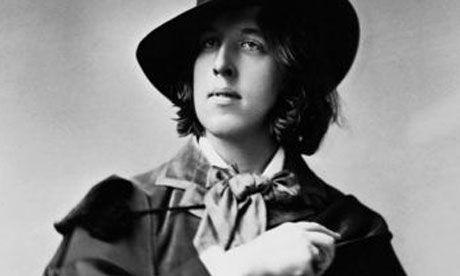The return of Manmoth

Manmoth can’t really be dead, can he?
But Manmoth died in the autumn:
DEATH OF OSCAR WILDE; He Expires at an Obscure Hotel in the Latin Quarter of Paris. Is Said to Have Died from Meningitis, but There Is a Rumor that He Committed Suicide.
What love best about Manmoth? (A Top Five or Ten list of minutiae that will eventually come round to the critic and his work, in publication)
Fingal O’Flahertie Wills as middle names (older brother Willie Wilde—a real, as if imagined, alliterative sibling—and two half-sisters burned to death in an accident triggered by one dancing too close to a coal fire)
deep appreciation for peacock feathers as decorative accoutrement; also: blue china and lilies (and lectures during his 1882 American tour on the history of interior design)
Names of periodicals at which he played an editorial role: the Pall Mall Gazette; the Lady’s World, later the Woman’s World; and the Chameleon (limited run)
choice of architecturally tectonic (as if GPS) coordinates for the publication name associated with The Ballad of Reading Gaol—C33 (cell block C, landing 3, cell 3)
the fascinating etymology of the word “dude,” (c. 1883) in which (depending on the source) Wilde plays a role as progenitor, coiner, inspiration, or exemplar
From the Brooklyn Eagle (25 February 1883):
A new word has been coined. It is d-u-d-e or d-o-o-d. The spelling does not seem to be distinctly settled yet. Just where the word came from nobody knows, but it has sprung into popularity in the last two weeks, so that now everybody is using it. A dude cannot be old; he must be young, and to be properly termed a dude he should be of a certain class who affect Metropolitan theaters. The dude is from 19 to 28 years of age, wears trousers of extreme tightness, is hollow chested, effeminate in his ways, apes the English and distinguishes himself among his fellowmen as a lover of actresses. The badge of his office is the paper cigarette, and his bell crown English opera hat is his chiefest (sic) joy.
But minor delights aside: Manmoth lingers in witty epigrams, sharp-toothed dramas dressed up in social etiquette, and as a major figure in both aesthetics and the history of criticism. Just this past weekend, the New York Times devoted a significant portion of their Book Review to lit crit’s current manifestations (“Why Criticism Matters”), with thoughtful pieces by rising stars like Elif Batuman and Sam Anderson. Wilde appeared in the usual dapper photograph in a section on Masters of the Form, which hailed Manmoth alongside Eliot and Matthew Arnold (many Wolverines on Dover Beach these days?), among others. Here, the Times sampled “The Critic as Artist,” one of the pieces published by Chicago in The Artist as Critic: Critical Wrings of Oscar Wilde.
“Wilde . . . emerges now as not only brilliant but also revolutionary, one of the great thinkers of dangerous thoughts.”—Walter Allen, New York Times Book Review
This essay, like many by Wilde in this collection, has been taken to heart (and put to memory) by many, despite the recent celebration of its 120th birthday. “To the critic the work of art is simply a suggestion for a new work of his own, that need not necessarily bear any obvious resemblance to the thing it criticizes.” What remains special about this book, though, even more so than the writings of Wilde is Richard Ellman’s editorial hand. Winner of a posthumous National Book Critics Circle Award and the Pulitzer Prize for his Oscar Wilde (1989, and still the standard life), Ellman was also embraced by writer Edna O’Brien as the only person who conquered Finnegans Wake and “digested the whole of it.”

Much of the Times piece on criticism’s future seemed to be trying to articulate the uncertain remains of liberal humanism. Richard Ellman was one of its twentieth-century faces and his work on Wilde one of the triumphs of his career. It made for compelling reading to juxtapose vintage soundbites from the masters alongside those important new critical geographies, but if you’re curious about those “whispers of a thousand different things which were not present in the mind of him who carved the statue or painted the panel or graved the [critical] gem,” Ellman’s collection is worth revisiting.

